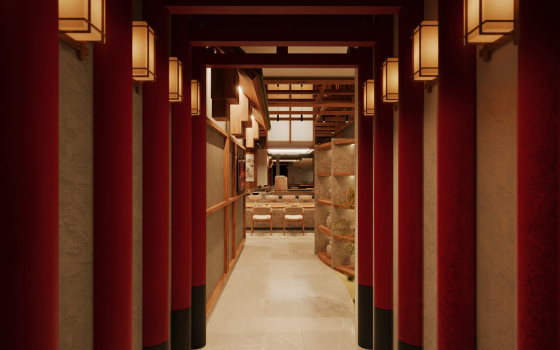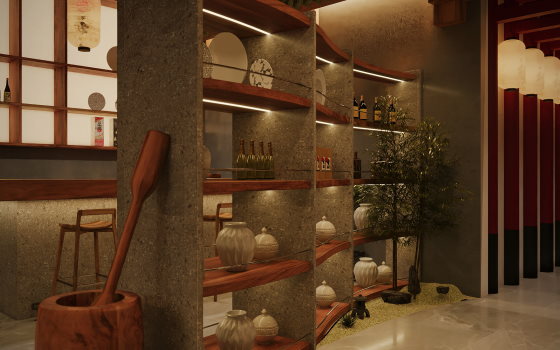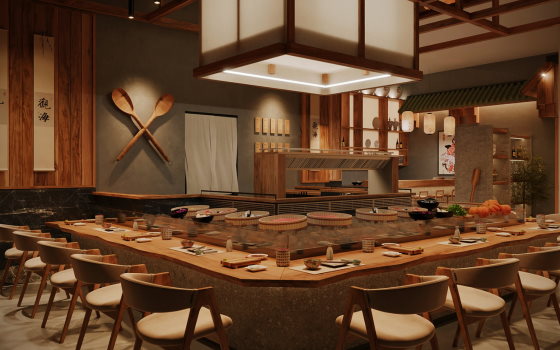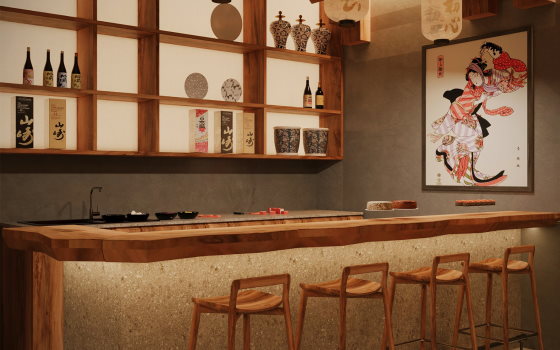The Origin of Robatayaki
|
Robatayaki originated in Hokkaido's fishing villages, where fishermen shared their catch around an open hearth. This communal cooking evolved into Robatayaki, where fresh, seasonal ingredients are slow-grilled over an open flame, imparting a distinct smokiness and rich flavor.
At Umi, we proudly bring this centuries-old Japanese tradition to Malaysia as the country's first traditional Robatayaki restaurant. Our chefs, trained in these ancient techniques, ensure each skewer captures the essence of authentic Robatayaki.
Umi is a culinary pioneer, blending Japanese precision with local flavors for a dining experience as diverse as the nation itself. Enjoy grilled delights perfected over centuries, all prepared with excellence in every detail. |
| |
 |
| |
This authentic Japanese serving method has been introduced to Malaysia by Umi Robatayaki. By using Miyajima - The long Paddle, Robatayaki restaurants preserve tradition, enhance presentation, foster interaction, and ensure practical serving methods.
The use of Miyajima in Robatayaki cuisine reflects the authentic Japanese dining experience and connects guests to Japan's cultural heritage. Serving dishes with Miyajima allows for a more interactive dining experience, as the chef uses the paddles to hand dishes directly to guests, creating a personal and engaging atmosphere. |
| |
 |
| |
| |
 |
| A Japanese restaurant adorned with aged wooden beams and panels, reminiscent of traditional Japanese architecture. The entrance features the “Torri gate”, the iconic symbols often seen in Shinto shrines and other sacred sites throughout Japan, gracefully curved arches made of vibrant red-orange painted wood. The arches are arranged in a line or in clusters, creating a striking visual pathway that leads visitors through the restaurant. |
|
|
| |
 |
| At the end of the torri gate, stepping into a serene oasis within the Japanese restaurant—a traditional Zen garden. The garden is a minimalist masterpiece, meticulously designed to evoke tranquility and harmony. Smooth gravel raked into intricate patterns represents flowing water, while carefully placed rocks symbolize islands or mountains emerging from the sea. |
|
|
| |
 |
| Inside, the ambiance is warm and inviting, with soft lighting illuminating the irregular wooden tables and marble stone on the floor. The walls are adorned with textured paint in the Japanese restaurant, adding depth and character to the space. The wall is adorned with a traditional Japanese painting technique called "sabi," which creates a sense of weathered beauty and imperfection. The textured paint mimics the rough surface of aged plaster or paper, adding tactile interest to the wall. |
|
|
| |
 |
| The centerpiece of the restaurant is a large, rustic wooden bar with a light box above the chef preparation counter. Guests sit around the grill, giving them a front-row seat to the culinary action. The chef, known as the "robatayaki master," skillfully grills an array of ingredients on long skewers, using techniques that emphasize the natural flavors of the ingredients. Once cooked to perfection, skewers served with a boat paddle. Each skewer, laden with deliciously grilled ingredients, is carefully arranged on the paddle, resembling a miniature boat loaded with culinary treasures. |
|
|
|